WWII aviation memoirs
I have very focused and peculiar (compared with the usual people you get to meet, that is) reading preferences. Actually, most of my hobbies are focused and peculiar. For the record, I only read Peanuts, 三國演義 related stuff and WWII aviation memoirs. 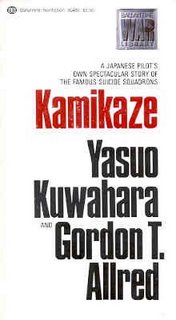 Yup, WWII aviation memoirs. Not just WWII related. Not just aviation related. Not just memoirs. Not just WWII aviation related. Not just aviation memoirs. Not just WWII memoirs. MUST be WWII aviation memoirs.
Yup, WWII aviation memoirs. Not just WWII related. Not just aviation related. Not just memoirs. Not just WWII aviation related. Not just aviation memoirs. Not just WWII memoirs. MUST be WWII aviation memoirs.
On last count, my collection of WWII aviation memoirs is over 150 strong. Yes, I OWN over 150 of these biographies and autobiographies. I don't borrow books from the library because I really hate the look and feel of books that have been ravaged and worn out. So my books are mostly brand new (just read once or twice by yours truly after purchase) or in fine condition (out of print but I managed to locate them in used bookshops from overseas). In any case, I am pretty sure our National Library do not carry these books.
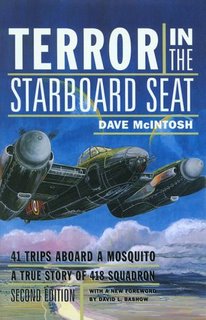 I have memoirs of pilots from almost every participant nation of WWII. From the Allies side, American, British, Canadian, Australian, New Zealander, South African, French, Dutch, Belgian, Icelander (!), Czech, Polish and Soviet. From the Axis side, Japanese, German and Austrian (!). And also a couple of Finnish (!!!) ones too (Finland didn't really belong to either the Axis or the Allies). I'm missing Italian memoirs in my collection. From what I know, only one Italian pilot has ever had his pilotage experiences written into a memoir but that was not translated into English. Pity.
I have memoirs of pilots from almost every participant nation of WWII. From the Allies side, American, British, Canadian, Australian, New Zealander, South African, French, Dutch, Belgian, Icelander (!), Czech, Polish and Soviet. From the Axis side, Japanese, German and Austrian (!). And also a couple of Finnish (!!!) ones too (Finland didn't really belong to either the Axis or the Allies). I'm missing Italian memoirs in my collection. From what I know, only one Italian pilot has ever had his pilotage experiences written into a memoir but that was not translated into English. Pity.
After reading so many of these memoirs, I have noticed some common traits across all WWII pilots. The fighter pilots were glad they were not bomber pilots because they regarded bombers as sitting ducks (read level and straight flight). The bomber pilots were glad they were not fighter pilots because bombers had more than one engine to bring them home with. Most pilots described combat missions as hours of boredom punctuated by a few seconds of sheer terror. Most fighter pilots also experienced the strange phenomena of being surrounded by many other fighter planes, both friendly and hostile, in one moment and suddenly finding himself alone in the sky the next. A most unusual experience!
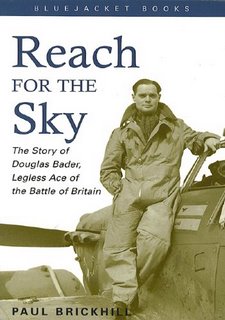 And most pilots lived life to the hilt because they are all fully aware that their next mission could be their last, although they do not talk about it. These were people who truly lived everyday as if it was going to be their last. Parties, booze, sex, pranks... you name it, they did it, but only during off duty hours. However, once strapped into their cockpits, they morph into fighting machines, calm, collected and cold, with the plane an extension of himself. They will also tell you they do not feel they were killing people when firing on an enemy plane; They're merely trying to bring down an enemy plane. Indeed, there was much chivalry practised then between pilots, e.g. no strafing at parachuting pilots and no firing on a plane when its pilot has dropped his wheels because he was giving up the fight and trying to make a crash landing. There were still some black sheeps who didn't abide by these unwritten rules and played dirty.
And most pilots lived life to the hilt because they are all fully aware that their next mission could be their last, although they do not talk about it. These were people who truly lived everyday as if it was going to be their last. Parties, booze, sex, pranks... you name it, they did it, but only during off duty hours. However, once strapped into their cockpits, they morph into fighting machines, calm, collected and cold, with the plane an extension of himself. They will also tell you they do not feel they were killing people when firing on an enemy plane; They're merely trying to bring down an enemy plane. Indeed, there was much chivalry practised then between pilots, e.g. no strafing at parachuting pilots and no firing on a plane when its pilot has dropped his wheels because he was giving up the fight and trying to make a crash landing. There were still some black sheeps who didn't abide by these unwritten rules and played dirty.
Having said the above, there were still certain traits particular to pilots from each participant country. The US pilots tended to be the most carefree. Perhaps because they knew their home country were not being directly threatened. The British pilots were grimmer, no doubt due to the fact that Britain stood alone against the whole of Europe (overrun by Hitler) for about a year. This only ended after Hitler looked east and invaded Soviet Union. The Japanese were a little extreme, e.g. they didn't want to wear parachutes because they deemed it unnecessary weight that slowed down the plane! The high attrition rate of Japanese pilots really came back to haunt them later in the war as the quality of their pilots fell drastically. The German pilots tended to be quite bitter as they were fighting a losing battle on all fronts for more than half the war. And for me, Canadian pilots had the greatest wit and sense of humour of them all. Terror in the Starboard Seat (see pic above) is one such fine example.
 I feel most for the pilots of countries that had been overrun by superior powers, e.g. the French, Belgian, Polish and Finnish (the latter's nation, invaded by Soviet Union) pilots. These felt the most intense of hatred for the enemy and fought really hard. The moment where they flew back to their respective home countries for the first time after its liberation makes for the most touching read.
I feel most for the pilots of countries that had been overrun by superior powers, e.g. the French, Belgian, Polish and Finnish (the latter's nation, invaded by Soviet Union) pilots. These felt the most intense of hatred for the enemy and fought really hard. The moment where they flew back to their respective home countries for the first time after its liberation makes for the most touching read.
Recently, I found out that a Singaporean pilot (Straits Chinese to be exact), Tan Kay Hai or 陳家海, had actually flown for the Allies during WWII. He had flown a P-51, Mustang (an American plane) over Normandy during the infamous D-Day landings. Here's a short English writeup and a Chinese newspaper report from 早報 on him. It was also mentioned in Tomorrow.sg earlier this year. That was how I came to know about this story. There are mentions of a book being written about this great man. I hope it will come true.
 Going back to my book collection and reading interests, so why WWII? Why aviation? And why memoirs?
Going back to my book collection and reading interests, so why WWII? Why aviation? And why memoirs?
Well, the period of the mid 1930s to the mid 1940s marked the advent of the monoplane (single metal wing). Prior to the 30s, it was still the era of the biplanes (double fabric and wooden wings). And after the 40s, it was the era of the jet engine (metallic delta wings, i.e. similar to those of the infamous F-16s). So the pilots of WWII had to cope with fairly modern and fast planes (compared to the obsolete biplanes) without the aids that are widely available later to jet pilots, e.g. G-suits (rudimentary ones were invented and made available to US pilots towards the end of the war). This odd mix made for an intriguing read. At least to me.
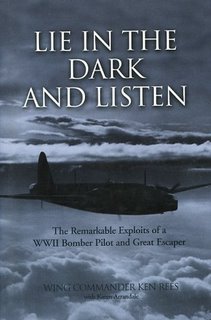 What makes these even more engaging reads for me was observing how the pilots coped with such a chameleon-like lifestyle as opposed to the constant fighting the army and navy personnel went through. As a pilot, one moment they would be lying on their soft and comfortable beds, eating decent food and the next, they could be fighting for the lives in the sky. Such a lifestyle was simply not sustainable and many suffered from combat fatigue (a term only coined many years later). So they were sent for rests after a few months' of fighting. The Germans and Japanese pilots did not have such a luxury as they were losing and suffered from manpower shortage. They almost always fought till the end of the war or to their deaths, whichever came first.
What makes these even more engaging reads for me was observing how the pilots coped with such a chameleon-like lifestyle as opposed to the constant fighting the army and navy personnel went through. As a pilot, one moment they would be lying on their soft and comfortable beds, eating decent food and the next, they could be fighting for the lives in the sky. Such a lifestyle was simply not sustainable and many suffered from combat fatigue (a term only coined many years later). So they were sent for rests after a few months' of fighting. The Germans and Japanese pilots did not have such a luxury as they were losing and suffered from manpower shortage. They almost always fought till the end of the war or to their deaths, whichever came first.
Sadly, work has slowed my reading signficantly this year. I haven't bought many books recently as well. Partially because I've bought most of the the interesting ones! Partially because these pilots are all of age now (80+ at least) and fewer and fewer new works are being written and released.
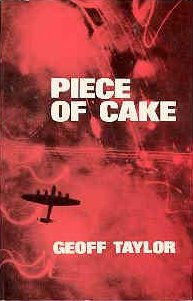 Soon they will be all gone and all that remains will be these books as records of their fight for their respective home countries.
Soon they will be all gone and all that remains will be these books as records of their fight for their respective home countries.
Akan Datang: Torch Light
137 days to go.
Edit: The pictures below were on 11th May 2006. They were taken after my return home, thanks to the digital camera borrowed from my sis: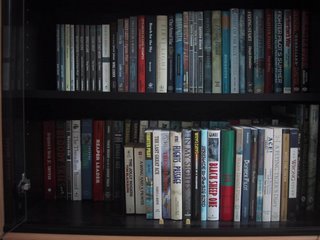 Here we see half of my WWII aviation memoirs collection. Shortly after my return to Singapore, I received an e-mail from a new reader (I suppose), also from Singapore, and who is also into WWII aviation. So this and the following pic is more for him than for anyone else. :P
Here we see half of my WWII aviation memoirs collection. Shortly after my return to Singapore, I received an e-mail from a new reader (I suppose), also from Singapore, and who is also into WWII aviation. So this and the following pic is more for him than for anyone else. :P The second half of my collection. Yes, I've read ALL of them. Oh, and the hawk-eyed ones amongst you might spot Roald Dahl amongst the titles (first pic). Yes, he was a WWII aviator too.
The second half of my collection. Yes, I've read ALL of them. Oh, and the hawk-eyed ones amongst you might spot Roald Dahl amongst the titles (first pic). Yes, he was a WWII aviator too.
 Yup, WWII aviation memoirs. Not just WWII related. Not just aviation related. Not just memoirs. Not just WWII aviation related. Not just aviation memoirs. Not just WWII memoirs. MUST be WWII aviation memoirs.
Yup, WWII aviation memoirs. Not just WWII related. Not just aviation related. Not just memoirs. Not just WWII aviation related. Not just aviation memoirs. Not just WWII memoirs. MUST be WWII aviation memoirs.On last count, my collection of WWII aviation memoirs is over 150 strong. Yes, I OWN over 150 of these biographies and autobiographies. I don't borrow books from the library because I really hate the look and feel of books that have been ravaged and worn out. So my books are mostly brand new (just read once or twice by yours truly after purchase) or in fine condition (out of print but I managed to locate them in used bookshops from overseas). In any case, I am pretty sure our National Library do not carry these books.
 I have memoirs of pilots from almost every participant nation of WWII. From the Allies side, American, British, Canadian, Australian, New Zealander, South African, French, Dutch, Belgian, Icelander (!), Czech, Polish and Soviet. From the Axis side, Japanese, German and Austrian (!). And also a couple of Finnish (!!!) ones too (Finland didn't really belong to either the Axis or the Allies). I'm missing Italian memoirs in my collection. From what I know, only one Italian pilot has ever had his pilotage experiences written into a memoir but that was not translated into English. Pity.
I have memoirs of pilots from almost every participant nation of WWII. From the Allies side, American, British, Canadian, Australian, New Zealander, South African, French, Dutch, Belgian, Icelander (!), Czech, Polish and Soviet. From the Axis side, Japanese, German and Austrian (!). And also a couple of Finnish (!!!) ones too (Finland didn't really belong to either the Axis or the Allies). I'm missing Italian memoirs in my collection. From what I know, only one Italian pilot has ever had his pilotage experiences written into a memoir but that was not translated into English. Pity.After reading so many of these memoirs, I have noticed some common traits across all WWII pilots. The fighter pilots were glad they were not bomber pilots because they regarded bombers as sitting ducks (read level and straight flight). The bomber pilots were glad they were not fighter pilots because bombers had more than one engine to bring them home with. Most pilots described combat missions as hours of boredom punctuated by a few seconds of sheer terror. Most fighter pilots also experienced the strange phenomena of being surrounded by many other fighter planes, both friendly and hostile, in one moment and suddenly finding himself alone in the sky the next. A most unusual experience!
 And most pilots lived life to the hilt because they are all fully aware that their next mission could be their last, although they do not talk about it. These were people who truly lived everyday as if it was going to be their last. Parties, booze, sex, pranks... you name it, they did it, but only during off duty hours. However, once strapped into their cockpits, they morph into fighting machines, calm, collected and cold, with the plane an extension of himself. They will also tell you they do not feel they were killing people when firing on an enemy plane; They're merely trying to bring down an enemy plane. Indeed, there was much chivalry practised then between pilots, e.g. no strafing at parachuting pilots and no firing on a plane when its pilot has dropped his wheels because he was giving up the fight and trying to make a crash landing. There were still some black sheeps who didn't abide by these unwritten rules and played dirty.
And most pilots lived life to the hilt because they are all fully aware that their next mission could be their last, although they do not talk about it. These were people who truly lived everyday as if it was going to be their last. Parties, booze, sex, pranks... you name it, they did it, but only during off duty hours. However, once strapped into their cockpits, they morph into fighting machines, calm, collected and cold, with the plane an extension of himself. They will also tell you they do not feel they were killing people when firing on an enemy plane; They're merely trying to bring down an enemy plane. Indeed, there was much chivalry practised then between pilots, e.g. no strafing at parachuting pilots and no firing on a plane when its pilot has dropped his wheels because he was giving up the fight and trying to make a crash landing. There were still some black sheeps who didn't abide by these unwritten rules and played dirty.Having said the above, there were still certain traits particular to pilots from each participant country. The US pilots tended to be the most carefree. Perhaps because they knew their home country were not being directly threatened. The British pilots were grimmer, no doubt due to the fact that Britain stood alone against the whole of Europe (overrun by Hitler) for about a year. This only ended after Hitler looked east and invaded Soviet Union. The Japanese were a little extreme, e.g. they didn't want to wear parachutes because they deemed it unnecessary weight that slowed down the plane! The high attrition rate of Japanese pilots really came back to haunt them later in the war as the quality of their pilots fell drastically. The German pilots tended to be quite bitter as they were fighting a losing battle on all fronts for more than half the war. And for me, Canadian pilots had the greatest wit and sense of humour of them all. Terror in the Starboard Seat (see pic above) is one such fine example.
 I feel most for the pilots of countries that had been overrun by superior powers, e.g. the French, Belgian, Polish and Finnish (the latter's nation, invaded by Soviet Union) pilots. These felt the most intense of hatred for the enemy and fought really hard. The moment where they flew back to their respective home countries for the first time after its liberation makes for the most touching read.
I feel most for the pilots of countries that had been overrun by superior powers, e.g. the French, Belgian, Polish and Finnish (the latter's nation, invaded by Soviet Union) pilots. These felt the most intense of hatred for the enemy and fought really hard. The moment where they flew back to their respective home countries for the first time after its liberation makes for the most touching read.Recently, I found out that a Singaporean pilot (Straits Chinese to be exact), Tan Kay Hai or 陳家海, had actually flown for the Allies during WWII. He had flown a P-51, Mustang (an American plane) over Normandy during the infamous D-Day landings. Here's a short English writeup and a Chinese newspaper report from 早報 on him. It was also mentioned in Tomorrow.sg earlier this year. That was how I came to know about this story. There are mentions of a book being written about this great man. I hope it will come true.
 Going back to my book collection and reading interests, so why WWII? Why aviation? And why memoirs?
Going back to my book collection and reading interests, so why WWII? Why aviation? And why memoirs?Well, the period of the mid 1930s to the mid 1940s marked the advent of the monoplane (single metal wing). Prior to the 30s, it was still the era of the biplanes (double fabric and wooden wings). And after the 40s, it was the era of the jet engine (metallic delta wings, i.e. similar to those of the infamous F-16s). So the pilots of WWII had to cope with fairly modern and fast planes (compared to the obsolete biplanes) without the aids that are widely available later to jet pilots, e.g. G-suits (rudimentary ones were invented and made available to US pilots towards the end of the war). This odd mix made for an intriguing read. At least to me.
 What makes these even more engaging reads for me was observing how the pilots coped with such a chameleon-like lifestyle as opposed to the constant fighting the army and navy personnel went through. As a pilot, one moment they would be lying on their soft and comfortable beds, eating decent food and the next, they could be fighting for the lives in the sky. Such a lifestyle was simply not sustainable and many suffered from combat fatigue (a term only coined many years later). So they were sent for rests after a few months' of fighting. The Germans and Japanese pilots did not have such a luxury as they were losing and suffered from manpower shortage. They almost always fought till the end of the war or to their deaths, whichever came first.
What makes these even more engaging reads for me was observing how the pilots coped with such a chameleon-like lifestyle as opposed to the constant fighting the army and navy personnel went through. As a pilot, one moment they would be lying on their soft and comfortable beds, eating decent food and the next, they could be fighting for the lives in the sky. Such a lifestyle was simply not sustainable and many suffered from combat fatigue (a term only coined many years later). So they were sent for rests after a few months' of fighting. The Germans and Japanese pilots did not have such a luxury as they were losing and suffered from manpower shortage. They almost always fought till the end of the war or to their deaths, whichever came first.Sadly, work has slowed my reading signficantly this year. I haven't bought many books recently as well. Partially because I've bought most of the the interesting ones! Partially because these pilots are all of age now (80+ at least) and fewer and fewer new works are being written and released.
 Soon they will be all gone and all that remains will be these books as records of their fight for their respective home countries.
Soon they will be all gone and all that remains will be these books as records of their fight for their respective home countries.Akan Datang: Torch Light
137 days to go.
Edit: The pictures below were on 11th May 2006. They were taken after my return home, thanks to the digital camera borrowed from my sis:
 Here we see half of my WWII aviation memoirs collection. Shortly after my return to Singapore, I received an e-mail from a new reader (I suppose), also from Singapore, and who is also into WWII aviation. So this and the following pic is more for him than for anyone else. :P
Here we see half of my WWII aviation memoirs collection. Shortly after my return to Singapore, I received an e-mail from a new reader (I suppose), also from Singapore, and who is also into WWII aviation. So this and the following pic is more for him than for anyone else. :P The second half of my collection. Yes, I've read ALL of them. Oh, and the hawk-eyed ones amongst you might spot Roald Dahl amongst the titles (first pic). Yes, he was a WWII aviator too.
The second half of my collection. Yes, I've read ALL of them. Oh, and the hawk-eyed ones amongst you might spot Roald Dahl amongst the titles (first pic). Yes, he was a WWII aviator too.


0 Comments:
Post a Comment
<< Home